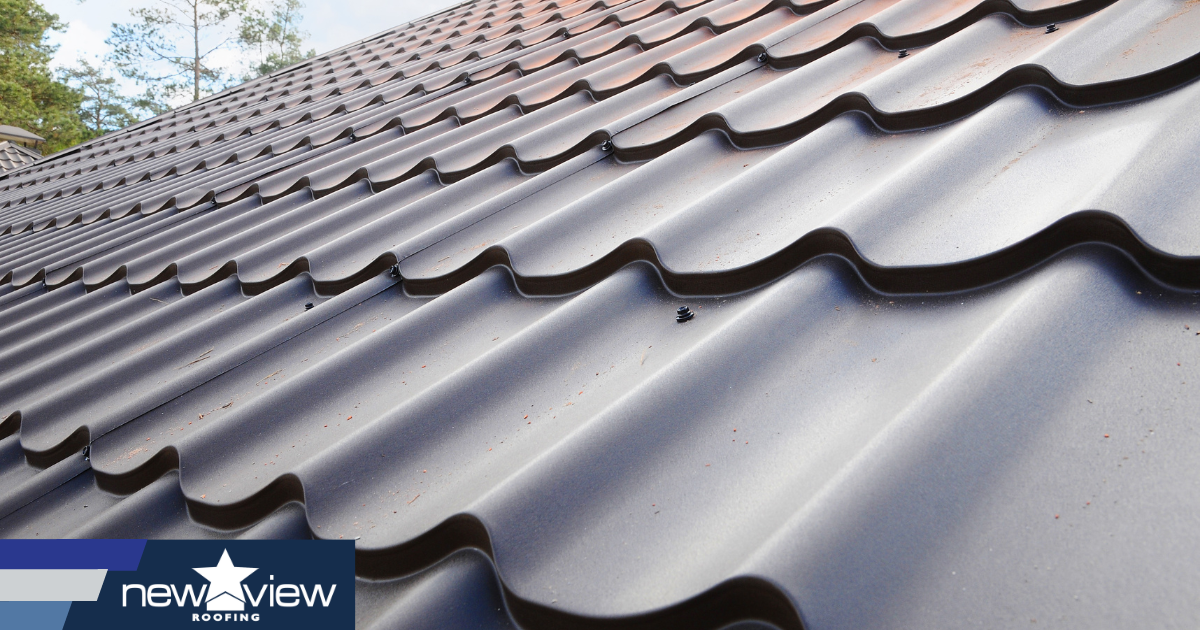Neighborhood Insights on Roofing Companies Gainesville Florida Homeowners Prefer
Neighborhood Insights on Roofing Companies Gainesville Florida Homeowners Prefer
Blog Article
Ideal Practices for Ensuring Appropriate Roof Covering Ventilation
Guaranteeing appropriate roof covering air flow is essential for the durability and efficiency of a roofing system. A balanced intake and exhaust vent ratio, commonly 1:300, plays a pivotal duty, with intake vents ideally put at the reduced side of the roof for cool air access and exhaust vents at the top for warm air departure. Routine inspections to identify obstructions and preserve clear air movement are paramount. Moreover, maintaining insulation far from vents is essential to stop air flow restriction. Understanding these foundational components establishes the stage for even more thorough insights right into setup and upkeep methods that can substantially boost your roof's efficiency.
Understand Ventilation Basics
Properly understanding air flow essentials is vital for ensuring the longevity and performance of roof covering systems. Effective ventilation minimizes moisture buildup and temperature extremes in the attic, both of which can bring about considerable architectural damage with time. A well-ventilated roofing helps in avoiding common problems such as mold and mildew development, wood rot, and ice dams, which can compromise the integrity of the roofing products and the underlying structures.
The main objective of air flow is to help with the activity of air, enabling a constant exchange in between the indoor and exterior settings. This equilibrium is achieved via a combination of intake and exhaust vents that collaborate to preserve ideal airflow. Intake vents, commonly located along the soffits or eaves, allow fresh air to get in the attic room, while exhaust vents, frequently located at or near the roof ridge, make it possible for hot, humid air to run away.
Secret aspects influencing the effectiveness of roofing system air flow consist of correct placement, appropriate sizing, and making sure that both intake and exhaust vents are unhampered. Regular inspection and maintenance are crucial to determine possible blockages, damage, or inefficiencies in the air flow system, consequently protecting the roof's performance and longevity.
Kinds Of Roof Vents
Roofing vents play a critical duty in maintaining efficient attic room air flow and, by extension, the total health and wellness of the roof covering system. Various kinds of roof vents are offered, each with distinct advantages customized to specific roof demands. Ridge vents, for example, are installed along the roof covering's optimal, enabling warm, damp air to escape from the attic. They use constant air flow and mix seamlessly with the roofline, making them both efficient and aesthetically pleasing.

Soffit vents are installed under the eaves and work in tandem with roof vents to make certain a balanced intake and exhaust system. By allowing cooler air to get in from below, soffit vents assist in the expulsion of warm air with upper vents. Gable vents, located on the outside wall surfaces of the attic room, deal one more reliable remedy, specifically in homes with gable roofs.
Assess Your Existing Ventilation

Next, consider the age and condition of your roof covering products and ventilation parts. Older systems may not adhere to current building regulations or may have worn away gradually, minimizing their performance. Conduct a detailed exam to determine any kind of indicators of wear and tear, such as rust, damages, or spaces that might endanger the system's efficiency.
In addition, determine the attic temperature level and moisture degrees. High temperatures and humidity can show insufficient air flow.
Installment Best Practices
Efficient installment of roof air flow systems is critical for ensuring optimal efficiency and durability. Proper setup begins with recognizing the details air flow needs of the structure and the roof it covers. This involves calculating the appropriate proportion of consumption to tire vents, normally adhering to the 1:300 rule, which specifies one square foot of ventilation for each 300 square feet of attic flooring area.

The positioning of vents is similarly crucial. Intake vents need to be mounted at the roof covering's lower edge, usually in the soffits, to permit great air to go into. Exhaust vents, on the various other hand, should be installed near or at the roof's peak to help with the exit of warm, wet air. This creates an all-natural air movement that assists maintain temperature level and wetness equilibrium within the attic room.
Seal all air vent links meticulously to avoid air leaks and prospective water seepage. Usage premium products and follow maker standards to make sure longevity and effectiveness. In addition, integrating ridge vents with baffles can significantly improve air flow effectiveness by avoiding wind-driven rainfall and snow from getting in the attic.
Ultimately, accurate setup of roof covering ventilation systems reduces prospective concerns such as mold and mildew growth, ice dams, and architectural damages, making sure the roofing system's integrity and the structure's overall wellness.
Routine Maintenance Tips
Uniformity in maintenance techniques is essential to ensuring the long-lasting effectiveness of roof air flow systems. Routine inspections are crucial, ideally done biannually-- in Check Out Your URL the springtime and fall. During these evaluations, make certain that vents are without debris, nests, and various other blockages that could impede air movement. Look for any type of signs of moisture buildup or mold and mildew, as these can suggest inappropriate air flow or leakages (gainesville roofing companies).
Make use of a soft brush or more information a vacuum cleaner to remove dirt and particles from intake and exhaust vents. Be careful not to damage the air vent displays or louvers during the process.
Appropriate insulation is just as essential. Ensure that attic insulation does not obstruct the vents, as this can severely restrict air movement. Rearrange or change it to maintain an efficient obstacle. if any kind of insulation has actually shifted or worked out.
Lastly, replace any type of harmed or missing out on components quickly. Damaged vents, split roof shingles, or scrubby blinking can all add to poor air flow and ought to be addressed right away. Normal maintenance ensures that the roof air flow system operates efficiently, thereby expanding the lifespan of the roof covering itself.
Final Thought
Guaranteeing correct roofing air flow is vital for keeping the effectiveness and sturdiness of a roof. Adherence to the 1:300 consumption and exhaust vent proportion, coupled with the calculated placement of vents, is important. Normal semiannual assessments, particles cleaning, and guaranteeing insulation does not block air flow are link crucial practices. Applying these ideal methods will certainly cultivate a well-ventilated roofing system, thus alleviating possible issues associated with moisture accumulation and extreme heat, ultimately prolonging the roofing's life expectancy.
A well balanced consumption and exhaust air vent ratio, generally 1:300, plays a critical duty, with consumption vents ideally put at the reduced edge of the roof covering for amazing air access and exhaust vents at the height for cozy air exit. Intake vents, normally situated along the eaves or soffits, enable fresh air to go into the attic area, while exhaust vents, typically located at or near the roof ridge, allow warm, moist air to run away.
Soffit vents are set up under the eaves and work in tandem with roof covering vents to make certain a balanced intake and exhaust system. By allowing cooler air to get in from below, soffit vents help with the expulsion of hot air via top vents. Adherence to the 1:300 consumption and exhaust vent ratio, combined with the calculated placement of vents, is necessary.
Report this page